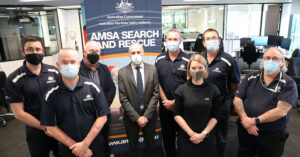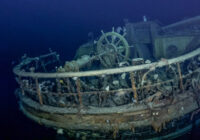The 25th anniversary of the integration of Australia’s aviation and marine Search and Rescue (SAR) functions was celebrated by the Australian Maritime Safety Authority (AMSA).

The Joint Rescue Coordination Centre (JRCC), located at AMSA’s headquarters in Canberra, was formed in July 1997 when the search and rescue functions of Airservices Australia and AMSA merged.
The JRCC is part of AMSA’s Response Centre that leads and coordinates search and rescue and response activities on a 24/7 basis across Australia’s vast search and rescue region.
Covering about 53 million square kilometres, Australia’s SAR region is the equivalent of 10 per cent of the earth’s surface and covers the Indian, Pacific and Southern oceans.
Since establishing the JRCC, AMSA has saved an average of 200 lives per year by working closely across Government and with State and Territory rescue agencies and partners. AMSA also responds to around 8000 incidents a year.
AMSA’s Response Centre Manager Kevin McEvoy said to celebrate the JRCC 25th anniversary, AMSA was honouring the highly trained personnel and leaders across Australia that have helped to save lives and kept our seas safe over the past quarter of a century.
“We save lives thanks to our 24/7 capability that allows us to respond quickly to people in distress across our SAR region along with domestic and international partner agencies,” Mr McEvoy said.
“We use advanced response and satellite technology, an emergency towage vessel and our dedicated jet aircraft to respond. Our Challenger rescue aircraft are specially modified for quick response and include capability to drop life rafts and communications to survivors on land and at sea.
“Our mission of having clean oceans and saving lives also means we have a role in promoting safe operation of vessels and protecting the marine environment through being able to respond to pollution incidents.”
While AMSA is celebrating 25 years of the JRCC, Mr McEvoy said the organisation’s involvement in search and rescue dates back much longer following the formation of the National Conference on SAR.
“Importantly, in 2026 we celebrate 50 years of operations under the National SAR System, which began in 1976,” Mr McEvoy said.
“Australia’s SAR system is built on a foundation of strong collaborative relationships and formal arrangements. This allows us to provide an effective SAR service to anyone in distress, no matter where they are in the Australian region.
“We look forward to continuing our vital role in providing search and rescue in Australia along with our domestic and international partner agencies into the future.”







